How would Switzerland rebuild a national treasure like Notre-Dame?
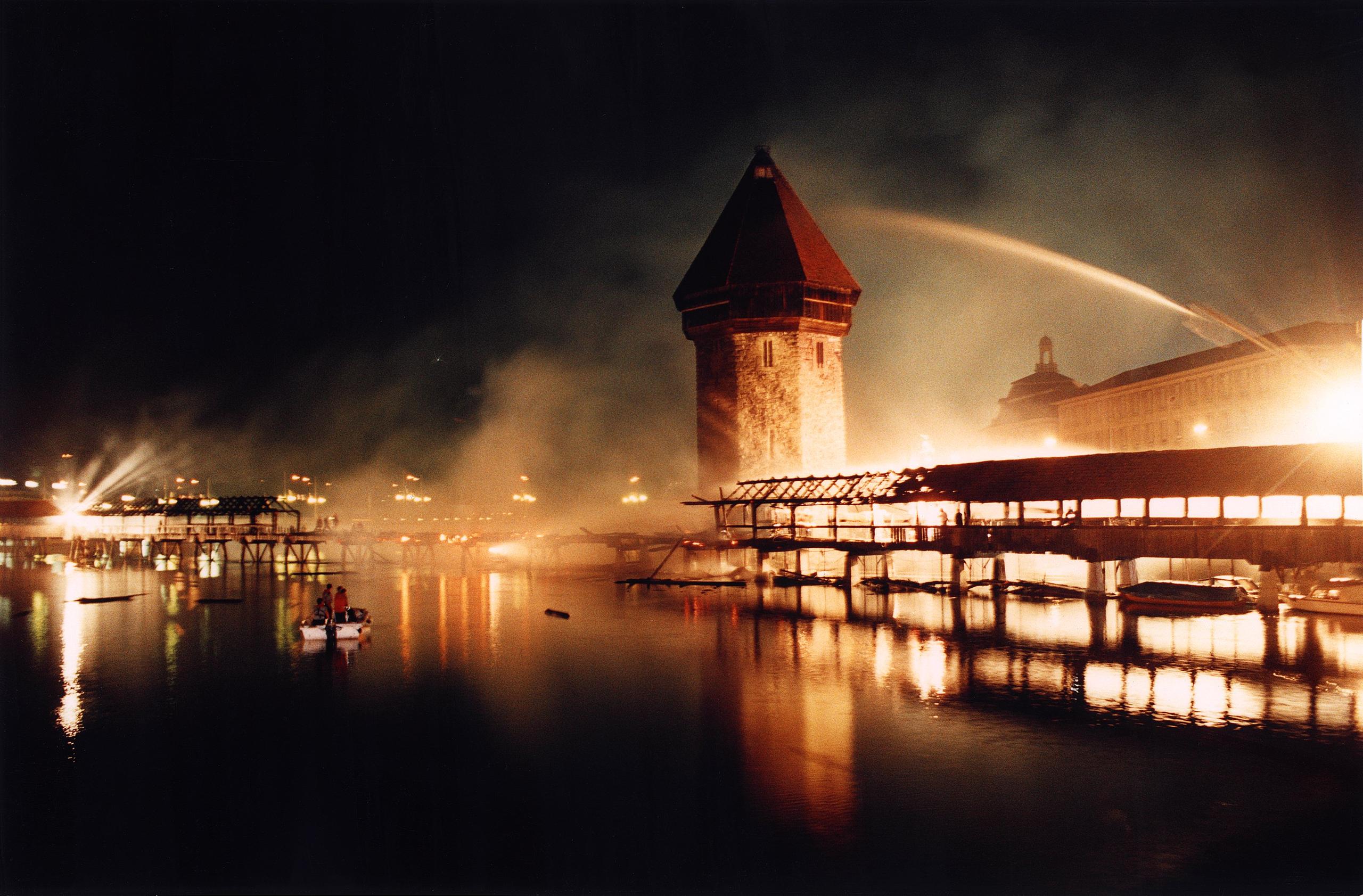
For many Swiss, the fiery devastation of Notre-Dame Cathedral sparks another memory – that of Lucerne’s wooden Chapel Bridge in flames. How will Paris cope with its loss?
In August 18, 1993, the people of Lucerne awoke to find their beloved wooden Chapel Bridge (Kapellbrücke)External link a smoky wreck. Despite the efforts of firefighters – who managed to save the octagonal water tower – two-thirds of the 14th-century bridge spanning the River Reuss burned like tinder.
“A piece of home and identity, and an important landmark were lost,” says Lucerne city architect Jürg Rehsteiner. He believes the prompt reconstruction was important because “it enabled locals to get over the loss”.
Andreas Hindemann agrees. He is head architect in charge of Basel CathedralExternal link, which turns 1,000 this year. “They should reconstruct Notre-Dame; it’s part of their history and of international importance.”
In the case of Lucerne’s Chapel Bridge, restoration was relatively straightforward – and finished within ten months.
“The bridge was well documented due to regular maintenance, so the reconstruction of the wooden parts of the bridge was quite manageable. But dealing with the loss of so much of the original artwork has been a big challenge – even to this day,” says Rehsteiner, referring to the triangular paintings that decorated the bridge rafters.
The exact cause of the Lucerne fire remains unknown, but authorities say it was probably a carelessly discarded cigarette that set fire to a boat moored beneath the bridge.
1,000-year-old Basel cathedral
In Basel, Hindemann and his team have plans that document every stone of the city’s cathedral – known locally as Basler Münster. The cathedral already survived disaster in October 1356, when an earthquake destroyed five spires as well as the vault and choir – all rebuilt in the Middle Ages.
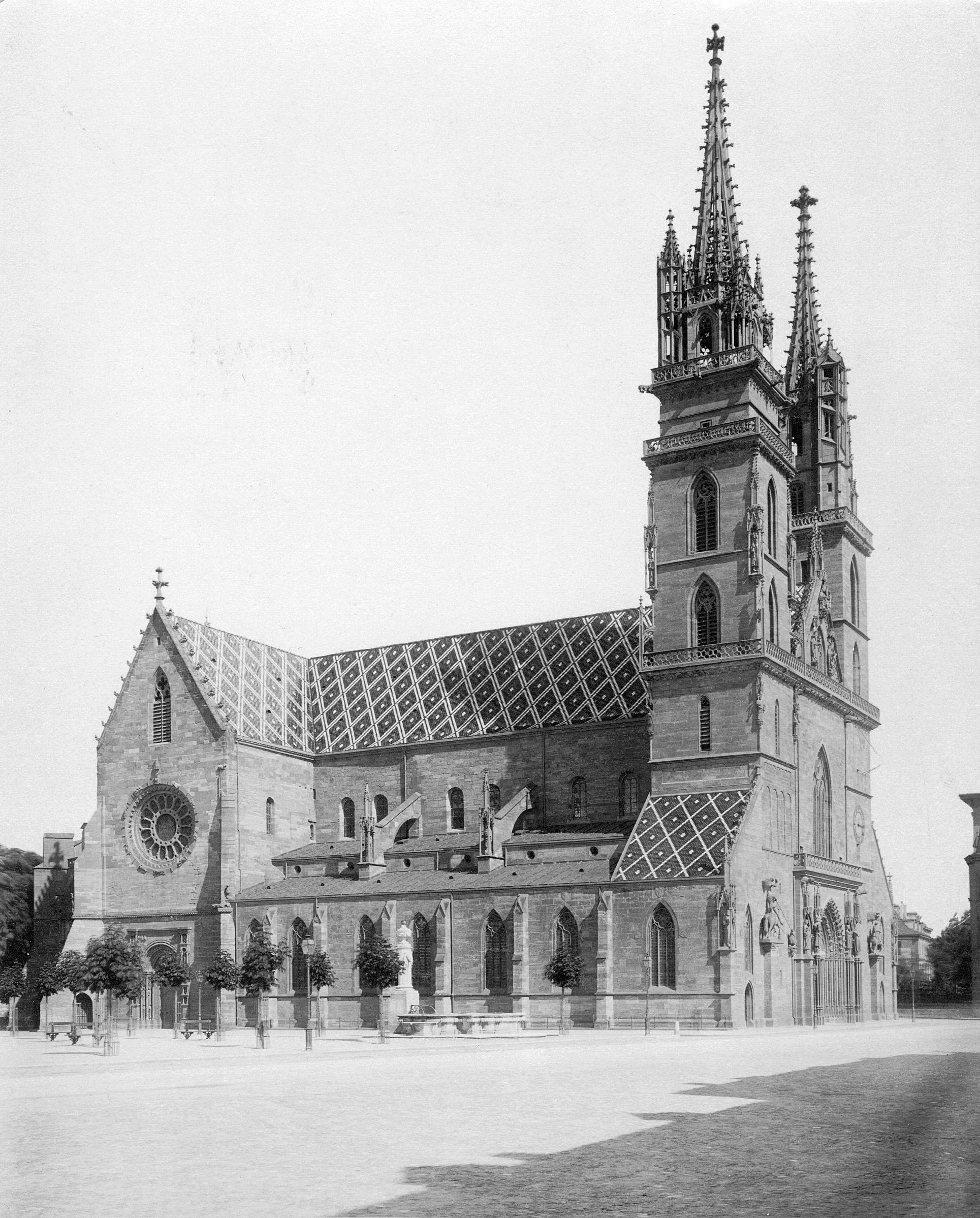
Basler Münster is architecturally “far more modest” than Notre-Dame, which has much bigger dimensions, points out Hindemann. He says the first step to reconstruction will be determining how intact the supporting structure remains.
“It’s do-able, but the big challenge will be renewing the charisma. With the Basler Münster, it’s always hard when we have to replace something from the Middle Ages. A copy is never the same as the original,” Hindemann says.
In Lucerne, Rehsteiner feels the new bridge – 26 years old this month – has been a success. “It completely fulfils its role as something that locals identify with, and as a landmark for the city of Lucerne.”
Constant construction in Bern
The people of Bern hardly know what their local cathedral looks like without scaffolding.
“There’s always a building that needs to be maintained, so it’s not a problem that the cathedral is also being worked on, patched up and upgraded in a long, continuous process. In the long term, the careful use of original structures also helps to save costs,” says architecture historian Christoph Schläppi, a board member of the Berner MünsterExternal link foundation.
Notre-Dame is almost twice as large, and its construction began 250 years earlier before Bern’s – making it an important model for Bern’s cathedral. “The two churches use the same technology and the same materials; you could say Berner Münster was built in the same Gothic tradition that began in France in the 12th century.”
Both churches took about 200 years to build. It’s hard to estimate how long repairs to Notre-Dame will take.
“Technically, reconstruction is possible, but extremely demanding. The work must be carried out with the greatest care in order to protect the undamaged parts,” says Schläppi, predicting that Paris will probably erect an emergency roof before rebuilding the partially collapsed vaults and proceeding with carpentry work and roof coverings.
He describes the Notre-Dame fire as a catastrophe. “A large part of the medieval structure has been destroyed irretrievably. Medieval roof trusses or parts of them have been preserved in only a few places, like Bern and Lausanne.”

In compliance with the JTI standards
More: SWI swissinfo.ch certified by the Journalism Trust Initiative

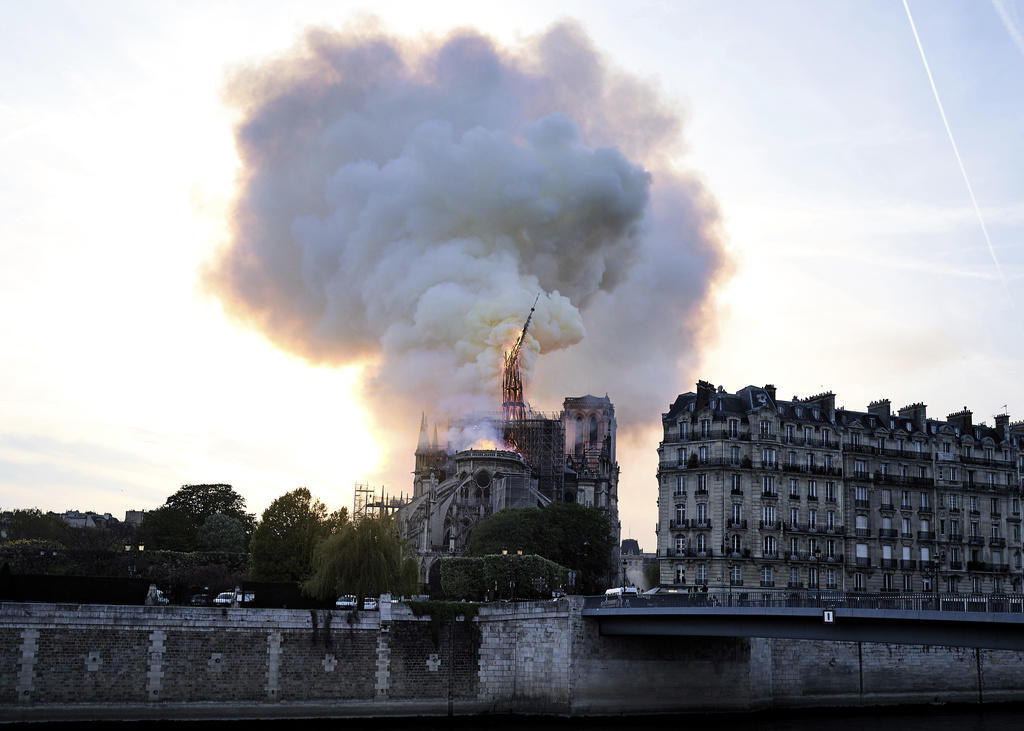
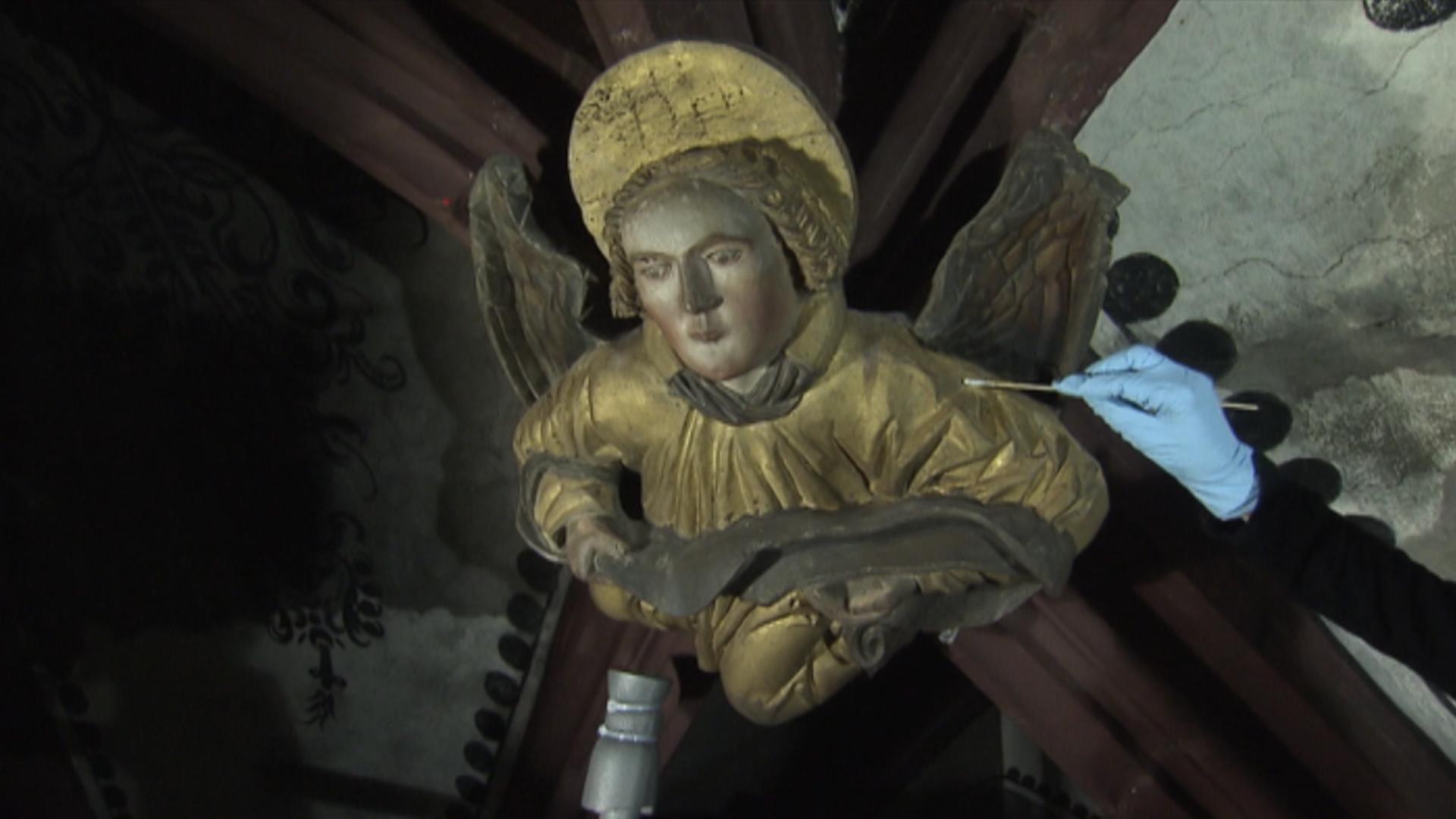
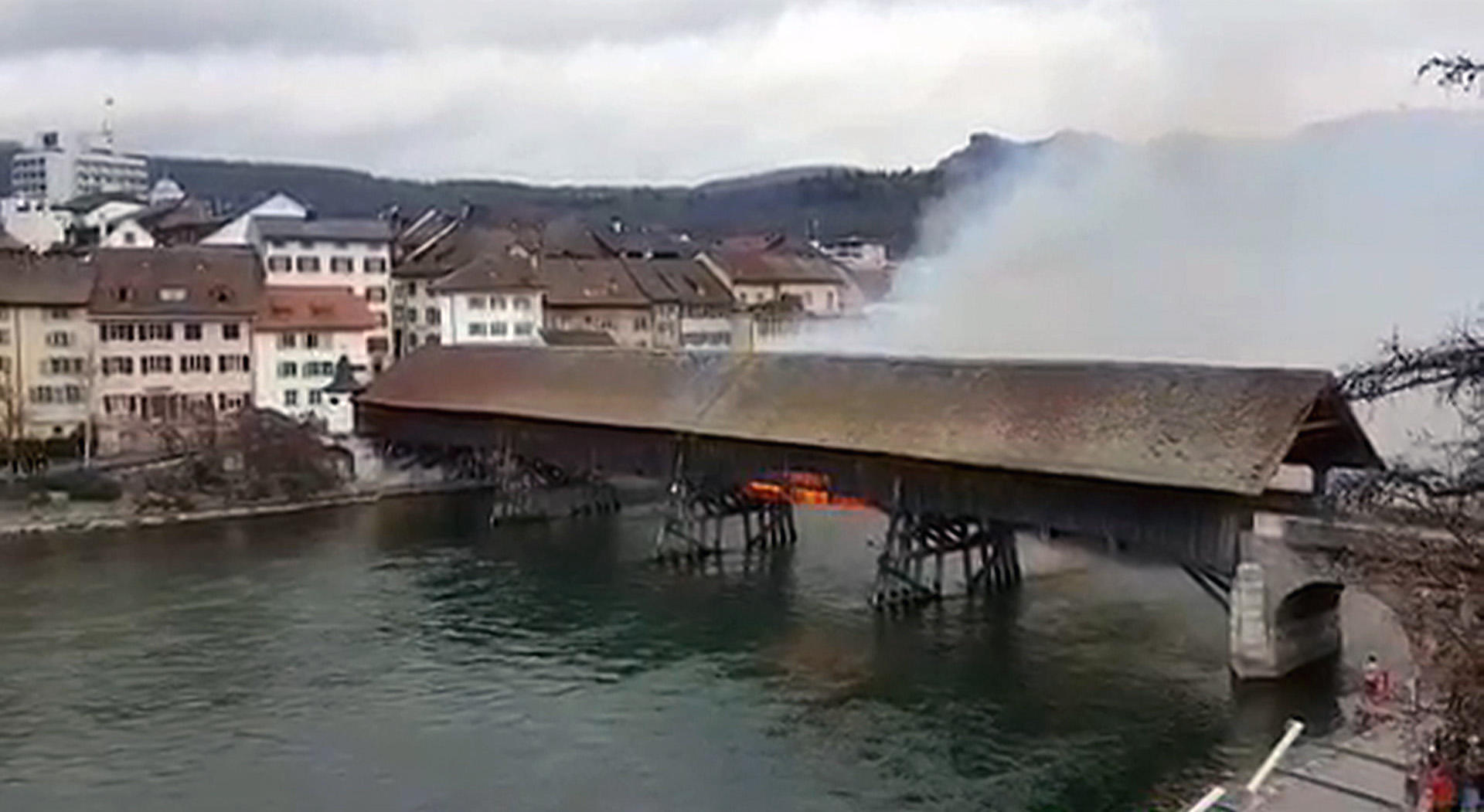
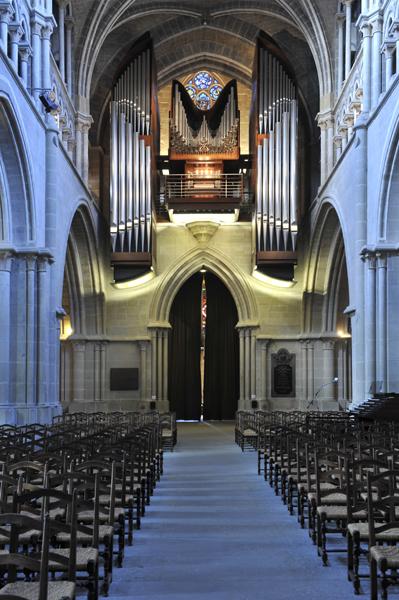
You can find an overview of ongoing debates with our journalists here. Please join us!
If you want to start a conversation about a topic raised in this article or want to report factual errors, email us at english@swissinfo.ch.